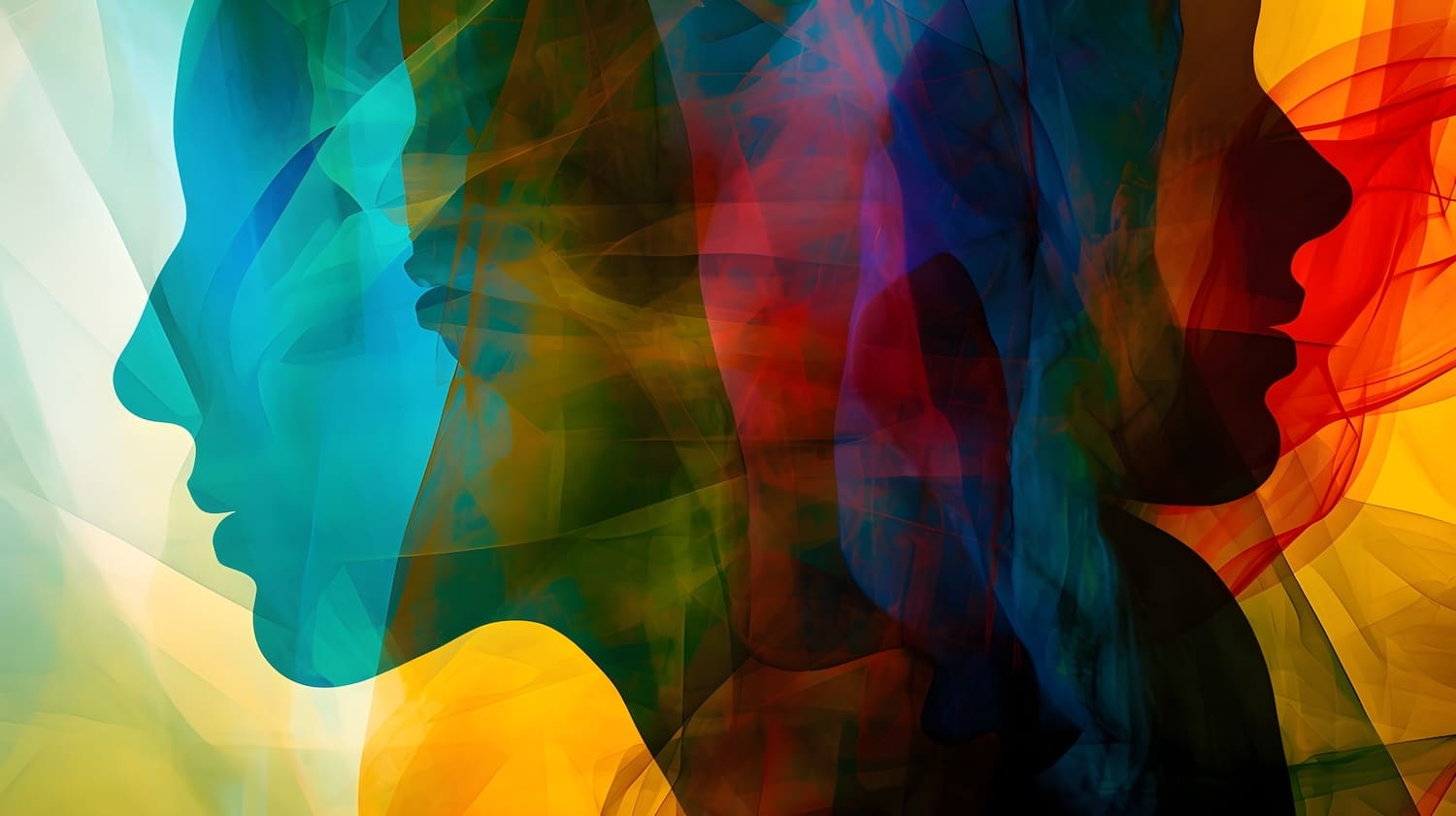Most people have heard of bipolar disorder, but not everyone understands the specifics of the condition. Some believe it is characterized by drastic and sudden mood swings, for instance, when someone flies into a fit of unexpected rage. However, this is a widely held misconception. Bipolar disorder is a much more complex condition characterized by extended periods of intense mood episodes.
Bipolar disorder is typically hereditary. An estimated 80-90% of individuals with the disorder have a relative with bipolar disorder or depression. Though the specific causes are unclear, both biological factors (including a family history of mood disorders, psychotic disorders, and substance abuse disorder) and environmental factors increase the risk. The average age of onset is in the mid-20s.1
The three primary diagnoses of bipolar disorder are:
- Bipolar I
- Bipolar II
- Cyclothymic disorder
What are the differences between the types of bipolar disorder? What are the unique characteristics of each type, and how are they treated? Gaining a deeper understanding of the different types of bipolar disorder, common symptoms, and treatment options will enable you or your loved ones to find the care and support you need and deserve.
Symptoms of Bipolar I
Bipolar I disorder is diagnosed when an individual experiences one or more episodes of mania. They can still experience periods of mood stability, as well as periods of depression or hypomania. Though manic episodes are vital in determining this type of bipolar disorder.1
Individuals with bipolar I disorder commonly have other mental disorders such as substance use disorder, anxiety disorder, and attention-deficit/hyperactivity disorder (ADHD). *The risk of suicide is significantly higher among individuals with bipolar I disorder than those without.
*If you or a loved one are having suicidal thoughts or are considering self-harm, you are experiencing a mental health emergency and need urgent support. Contact the 988 Suicide and Crisis Lifeline 24/7/365 by calling or texting 988.
Symptoms of Bipolar II
An individual may be diagnosed with bipolar II disorder when they experience at least one major depressive episode and at least one hypomanic episode — a period of less severe mania. Those with bipolar II do not experience full-blown manic episodes. However, both hypomanic and depressive episodes typically intersperse between periods of normal functioning.
Bipolar II disorder treatment is commonly sought first as a result of the depressive episode(s), as the hypomanic episodes usually feel pleasurable, increasing work or school performance. Similar to bipolar I, bipolar II frequently co-occurs with other mental health conditions such as anxiety disorder or substance use disorder.
Cyclothymic Disorder
Cyclothymic disorder is a milder form of bipolar disorder characterized by frequent shifts in mood exhibiting both hypomanic and depressive symptoms. Individuals with cyclothymia experience notable ups and downs in their emotions, but symptoms are not as intense or severe as those with bipolar I or bipolar II.
Symptoms of cyclothymic disorder must be present for at least two years and, in effect, at least half of that time, without stopping for more than two months. However, symptoms never become intense enough to meet the criteria for full hypomanic or depressive episodes.
What is Mania?
Mania is reflected by an extreme increase in energy and mood changes, ranging from extreme happiness to high irritability. A manic episode refers to a distinct period of significantly elevated, euphoric, or irritable mood paired with abnormally high energy and activity levels. It lasts at least seven days, with symptoms present most of the time. When a person experiences mania, their behavior is highly unusual, and the changes are apparent to loved ones familiar with their usual functioning.
In addition to mood extremes and increases in energy and activity, a person experiencing mania will display three of the following symptoms (four if their mood is exclusively irritable):
- Exaggerated self-esteem and feelings of grandiosity
- Decreased need for sleep
- Racing thoughts (erratic speech patterns, rapid switching between topics and ideas)
- Excessive talkativeness
- Distractibility, especially to irrelevant stimuli
- Increased goal-directed behavior and psychomotor agitation (foot-tapping, pacing, fidgeting)
- Abnormal involvement in risky or potentially harmful activities (excessive shopping sprees, risky investments, sexual indiscretions)
Mania is severe enough to disrupt a person’s social and occupational functioning. It may also cause psychosis or necessitate hospitalization to prevent the individual experiencing the episode from harming themselves or others. Psychotic symptoms exhibited during mania are disorganized thinking, false beliefs, or hallucinations.
It is important to note that those in manic states are generally unaware of the negative consequences of their actions. *As such, suicide is an ever-present danger with bipolar disorder — some people can become suicidal even in manic states.2
*If you or a loved one are having suicidal thoughts or are considering self-harm, you are experiencing a mental health emergency and need urgent support. Contact the 988 Suicide and Crisis Lifeline 24/7/365 by calling or texting 988.
What is Hypomania?
Hypomania is a condition similar to mania but with less severe symptoms. It affects moods, emotions, energy levels, and activity. It must be a notable change from a person’s usual state and noticeable to others, similar to manic episodes.
While each person’s triggers are different, some common triggers of hypomania include:
- Sensory overload in a particular situation or environment (lots of noise, bright lights, large crowds)
- Significant life changes (divorce, marriage, job loss)
- Lack of sleep (less than six to nine hours)
- Substance use (recreational drugs, alcohol)
Symptoms of hypomania are similar to the symptoms of mania but do not cause severe problems in daily functioning or require hospitalization. Often, people with bipolar II do not realize they are experiencing hypomania because the increased energy and activity levels are usually welcomed.3
What are Depressive Episodes?
Major depressive episodes are periods that last at least two weeks and are characterized by intense feelings of sadness or despair. People typically lose interest in activities they enjoy during their more “up” periods, as well as at least four of the following symptoms:
- Feeling worthless or guilty
- Fatigue
- Increased or decreased sleep and appetite
- Restlessness
- Slowed speech or movement
- Difficulty concentrating
- Thinking about suicide or death
What are the Key Differences Between Bipolar I and Bipolar II?
Bipolar I and bipolar II are similar conditions when looking at symptoms. However, they have significantly different severity levels.
| Bipolar I | Bipolar II |
| Possible depressive episodes | At least one depressive episode |
| Possible hypomanic episodes | At least one hypomanic episode |
| At least one manic episode | No manic episodes |
Bipolar I is far more intense and life-altering than bipolar II, with symptoms limiting a person’s ability to function properly in their daily life, especially during a manic episode.
Getting Treatment for Bipolar Disorder
Although bipolar disorder is a serious — and sometimes severe — condition, it is highly treatable with the proper intervention and care. The best approach to treatment is a combination of medication and psychotherapy. Medication offers relief from more severe symptoms and allows psychotherapeutic interventions to be more effective.
You will know it may be time to reach out for help as soon as possible if you or a loved one is experiencing the following:
- Having a hard time caring for basic daily needs
- Engaging in risky, dangerous, or extreme behavior
- Putting others at risk or in danger
- Having difficulty managing medications or medical appointments
Compassionate and customized care
Mental health treatment programs like Pasadena Villa are familiar with the different types of bipolar disorder and understand how to help those with other co-occurring conditions. We provide a clear, concise, comprehensive path to symptom management and equip individuals with tools and skills to live independent, fulfilling lives.
If you want to learn more about our individually customized treatment programs at Pasadena Villa, call us today or complete our online form. An admissions specialist will gladly talk you through any questions or concerns.
References:
1. American Psychiatric Association. (2024). What Are Bipolar Disorders?.
2 National Alliance on Mental Illness. (2017). Bipolar Disorder.
3 Hypomania: What Is It, Comparison vs Mania, Symptoms & Treatment. (2021). Cleveland Clinic. 4 Gupta, S. (2022, August 30). What Are the Differences Between Bipolar 1 vs. 2. GoodRx.



